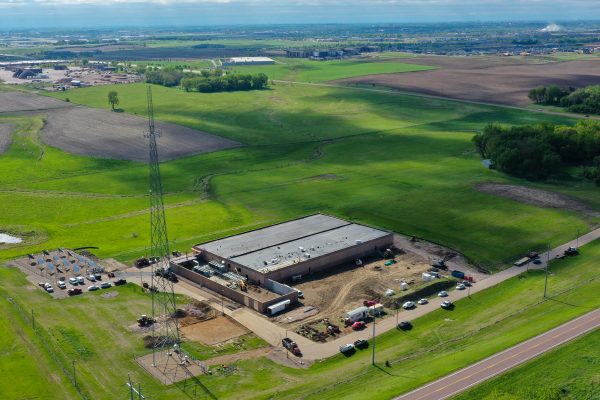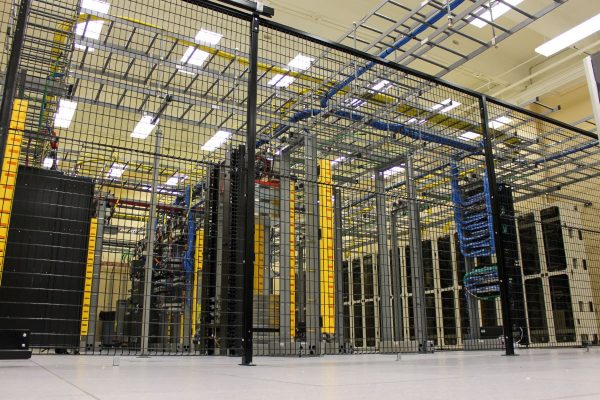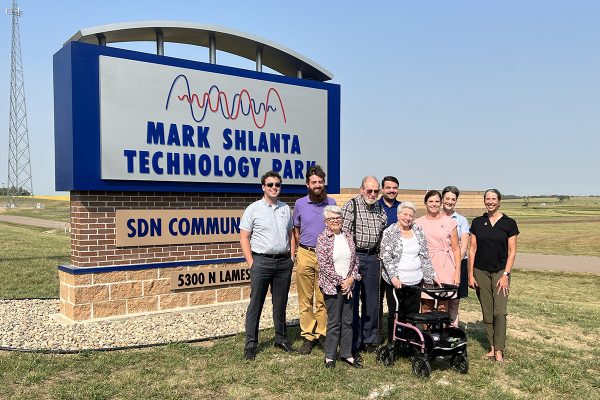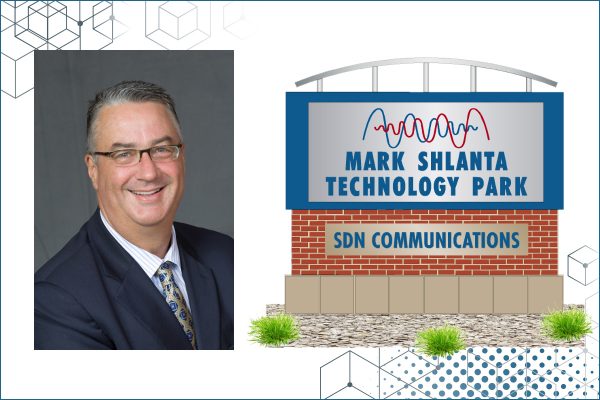Winters in the Sioux Falls area can be long. Snowy weather can begin as early as October and, as the winter of 2012-2013 reminded us, stretch well into April.
There are advantages to cold weather, and not just for people who enjoy ice fishing, snowmobiling or and other winter activities.
Experts point out that cool weather is among the advantages that the Sioux Falls area has to offer companies looking for a place to safely store electronic data. That’s because cold weather reduces the amount of electricity a data center needs to cool the inside of the building.
“It’s all about the cooling because the equipment puts out so much heat,” says Dean Dziedzic, Director of Strategic Initiatives for the Sioux Falls Development Foundation, which promotes the development of data centers in the community nationally.
The issue comes down to the consumption of electricity, a key cost factor for businesses considering leasing or building a data center space to store and protect information.
Sioux Falls, which is home to the SDN Communications Data Center and has space available for lease, has another key advantage on the electricity front: rates are comparatively low.
Power rates are competitive
Executives with companies that provide electricity to businesses in the Sioux Falls area say rates are attractive.
“This region is really competitive when it comes to electric rates,” says Carrie Law, Director of Communications and Governmental Relations for Sioux Valley Energy.
Sioux Valley provides electricity to SDN’s Data Center just northwest of Sioux Falls. SDN opened the facility at 5300 N. LaMesa Drive in late 2011. The Data Center backs up data stored on SDN’s main campus on West 10th Street, and was intentionally overbuilt to provide space for other businesses to lease.
Law says the four R’s of electrical power and distribution are important factors for prospective industrial users such as data centers:
- Reliability of service
- Robustness of the distribution system
- Redundancy of power feeds
- Rates that are attractive
Sioux Valley offers all of that, she says.
Jim Wilcox, Principal Manager for Xcel Energy in South Dakota, says electricity rates in Sioux Falls are lower than on the East and West Coasts.
“We are well below those rates,” he says.
Companies in middle of the United States tend to especially rate-conscious, Wilcox says. Xcel strives to provide high service a low costs, he says.
Rates charged by power companies to large industrial users are bid or negotiated, so it’s hard to make direct comparisons between locations. However, rates in South Dakota, as a whole, hold up favorably in national comparisons.
The price for electricity in South Dakota, for all business and residential usage, averaged 8.1 cents per kilowatthour in 2011, compared to a national average of 10.0 cents per kilowatthour, according to the US Energy Information Administration.
Location factors into safety
Relative safety from natural disasters gives Sioux Falls an advantage over many prospective U.S. sites for data centers, Dziedzic says.
“We don’t get hurricanes. Not much flooding. We get some tornado activity, but we’re north of most of that,” he says. “I don’t think we experience the natural disasters that some parts of the country do.”
The SDN Data Center on LaMesa was built with 12-inch-thick concrete walls, it’s designed to withstand extreme weather conditions, ensuring a resilient infrastructure and redundant utility operations.
The window-less data center, or colocation facility, has foot-thick, concrete walls and a three-layered roof. It also has raised floors and redundant power feeds, and it’s under constant electronic surveillance. The center was built in a low area, beyond the 500-year flood plain, and near Interstates 29 and 90.
The location was based on safety factors such as historic weather patterns.
“We did our research on where the safest site for our (second) facility would be,” says Vernon Brown, SDN’s Director of Marketing and Community Relations.
The company learned, for example, that the second facility should be at least five miles away from the main campus.
CoSentry, a company that also provides data-protection services to clients, was the first major tenant at the SDN Data Center.
SDN CEO Mark Shlanta envisions additional data centers being developed on SDN’s 65-acre tract, either by the company or possibly other businesses.
And SDN isn’t the only company that sees Sioux Falls for its value in hosting data centers. Several others operate their own centers in town, including nationally known Automated Data Processing, which does so to protect its clients’ sensitive business information.



